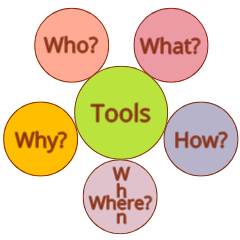Hello/So let's go to it!
So let's go to it!
Take your time. A Place to Study offers a variety of slow food for the soul. Quick visits become superficial because visitors feel they must do it all, all at once. That's not the way our lifeworld works — it takes each a lifetime, and that's all each gets.
Activities on A Place to Study have no beginning, middle, or end; no preferred sequence; no schedule or calendar. They are like activities in a city, an apparent bustle of many persons intentionally moving through many spaces, interacting with one another in an undulating churn of simultaneous events — large and small, fast and slow, intense and dull, highfalutin and plain. But the bustle appears greatest to the newcomer unaccustomed to seeing a lot of persons all at once, each seeming intent on going where they want to go.
Let's pierce the appearance. The urban pace isn't actually as intense as it looks because we don't perceive how all those people, so intent on going where they want to go, have more quietly taken their time to form those intentions, to recognize that they have many possibilities to choose among, to consider them, and to decide on which they will become intent on pursuing today. So take your time. On A Place to Study, we don't say that we must always be purposeful. We do want, continually, to let ourselves become purposeful. That's what going to it involves.
We can think of our point of entry, these initial pages, as a welcoming brochure for visitors and prospective residents — "High points of the city we love!" It surveys things to expect, helpful in a first visit. Soon we set more direct paths to where we want to go. That's what happens when the city you love begins to become down home. Long later, we may again find the old brochure useful to call to mind possibilities that familiarity has overlooked.
Whether first-timer or lifelong resident, one needs ways of getting around — cheap, easy, and reasonably fast. Our schema will get you quickly to the main districts, and if you know exactly where you want to go, with the search box at the top of the screen you can hail a cab, so-to-speak. But most of the time we don't know exactly where to go. That a feature, not of the site, but of life. Hence, keyword searching often doesn't work here, for A Place to Study is not an encyclopedia where each page provides information about the topic by which it's named. Here pages are reflective, sometimes poetic, provocative, suggestive, evocative, or unpredictable. Here we search in a deeper sense, not looking for a route to a known destination, but seeking to find, even better, to form our intention.
But how do we navigate to our goal when we don't know exactly what we are looking for? As we ask that question, we study. When we know what we are looking for, we can ask someone to tell us about it, or look it up and learn about it. When we don't know what we're looking for, we have to ask a lot of questions. That's the purpose of our districts, not to give the answer, but to help us pose our questions
These questions do not result in our knowing something as the answer. They are questions that help us recognize and understand what we're looking for. What we recognize and understand through such questioning culminates, not in the production of knowledge, but in the formation of intention, purpose, and value that we can and should institute in and through our lifeworlds. We question — Who? What? How? Where/When? Why? — not singly, not in a sequence, but in a continuous simultaneity out of which recognition and comprehension emerge.
- ↑ Rainer Maria Rilke. Letters to a Young Poet. (M. D. Herter Norton, trans., 1954). p. 35.




